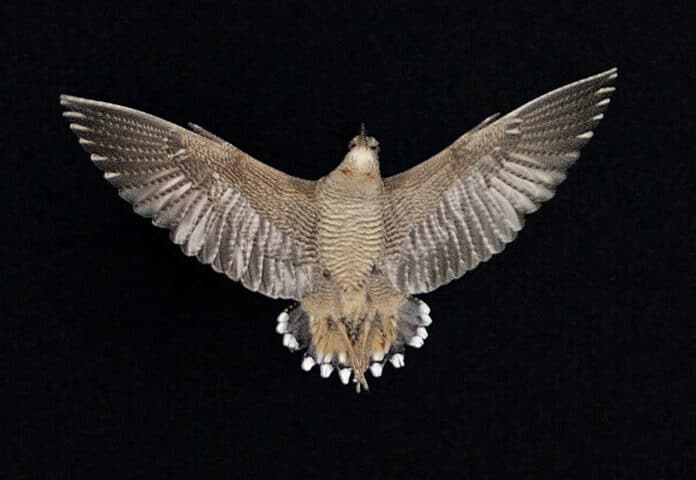Until recently, communication in nocturnal and crepuscular species was thought to follow acoustic and chemical pathways, unlike diurnal birds that use contrasted plumage patches and intricate feather structures to relay visual information. However, several birds that are active in low-light conditions have developed highly white patches of plumage within otherwise unnoticeable plumages.
A new study by Imperial College London uses spectrophotometry, electron microscopy, and optical modeling. It explained the mechanisms producing bright white tail feather tips of the Eurasian woodcock Scolopax rusticola.
The underside of the tail of the Eurasian woodcock, Scolopax rusticola, is covered with patches of white feathers in addition to its main coat of brown mottling. This indicates these patches are only visible when the animal raises its tail or performs courtship display flights.
The Eurasian woodcock, Scolopax rusticola, has a brown-mottled primary coat and patches of white feathers on the underside of its tail. This suggests the animal only displays these patches when it raises its tail or engages in courtship display flights.
Using specialized microscopy, scientists imaged feather structure, spectrophotometry to measure the light reflectance, and models to characterize how photons of light interact with structures inside the feather. To their surprise, they found that reflectance measurements showed the feathers reflected up to 55% of light – 30% more than any other measured feather.
Based on that, scientists concluded the mainly brown woodcock uses its bright white tail feathers to communicate in semi-darkness. The findings suggest much to learn about how birds most active at night or dawn and dusk communicate.
Individual feathers are made of a central stem with protrusions called rami, forming the structure’s bulk. The rami are held together by round Velcro-like’ barbules.’
The team found that in the woodcock’s white tail feathers, the rami are thickened and flattened, increasing the surface area for light to bounce off and making the light less likely to pass between the feather barbs without being reflected.
There are two main ways surfaces are reflective: Specular and Diffuse. ‘Specular’ reflection is when light bounces off a smooth surface, like a mirror. ‘Diffuse’ reflectance scatters light rays in different directions. The thickened rami were found to be made up of a network of keratin nanofibers and scattered air pockets. This creates many interfaces that can scatter light, increasing the feathers’ diffuse reflectance.
The rami and barbules in the white woodcock feathers are positioned to create a Venetian-blind-like effect that further boosts the surface area by resting at the best angle for light reflectance, according to an analysis of the feathers.
Principal Curator of Birds at the Natural History Museum, Dr. Alex Bond, said: “This research is a brilliant combination of using museum specimens and cutting-edge tools to try and understand this phenomenon. Seeing whether closely related species or species with similar ecology also had these incredibly white feathers was a key bit of figuring out the story.”
Journal Reference:
- Jamie Dunning, Anvay Patil, et al. How woodcocks produce the most brilliant white plumage patches among the birds. Royal Society Interface. DOI: 10.1098/rsif.2022.0920
